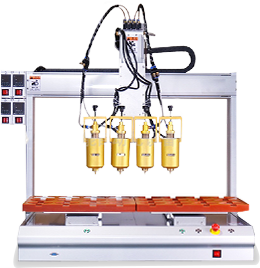

Industrial handles are important parts for human-machine interaction. They are made of high-strength engineering plastics, alloy steel, aluminum alloy and other materials through injection molding, CNC machining and other processes. Their design fully considers ergonomics, and they are comfortable to hold, labor-saving to operate, and have the characteristics of wear resistance, anti-slip, and corrosion resistance. Through precise structural design, they can realize functions such as equipment start and stop, parameter adjustment, and direction control. They are widely used in CNC machine tools, automated production lines, industrial robots and other equipment to improve operational convenience and equipment operation efficiency.
Adopting CNC machining and precision injection molding technology, the dimensional accuracy is controlled within ±0.1mm, and the parts fit tightly. After more than 100,000 operation life tests, the buttons are responsive and the structure is stable. It can still work stably in a temperature environment of -20℃ - 80℃. Some common specifications are as follows:
Type | Material | Applicable scenarios | Main functions |
Button handle | Engineering plastic | Automated production line start and stop control | One-button start and stop |
Joystick handle | Aluminum alloy | Industrial robot direction adjustment | Multi-axis linkage control |
Knob handle | Alloy steel | CNC machine tool parameter adjustment | Precise knob control |
III. Product Details
1. Material Type
Engineering Plastics: PA66+GF30 reinforced nylon has excellent mechanical properties and chemical resistance. By adding glass fiber reinforcement materials, the hardness and wear resistance are improved. It is often used in general industrial scenarios that are sensitive to weight and cost.
Alloy Steel: After quenching and tempering, 42CrMo alloy steel has high strength and good toughness. It can withstand large torque and impact force, and is suitable for the operating handle of heavy machinery and equipment.
Aluminum Alloy: 6061 aluminum alloy is light in weight and has good heat dissipation. After anodizing, it has good wear resistance and corrosion resistance. It is suitable for equipment that requires portability and aesthetics.
2. Structural Design
Handle Structure: Streamlined design, non-slip texture or soft rubber layer on the surface to increase friction, some models have built-in shock-absorbing rubber to reduce the transmission of operating vibration.
Functional Components: Integrated micro switches, potentiometers, encoders and other electronic components to achieve accurate signal feedback; the emergency stop button adopts a red mushroom head design, which meets safety standards and is convenient for quick operation in emergency situations.
Connection method: Provide threaded connection, flange connection, snap connection and other methods to facilitate installation and fixation with the main body of the equipment, ensuring that the connection is stable and not loose.
3. Manufacturing process
Injection molding: Use high-precision injection molds and servo injection molding machines to ensure that the handle has a delicate appearance, precise dimensions, and a smooth surface without burrs.
CNC machining: For metal handles, complex structural shapes and high-precision installation holes are processed through CNC turning, milling, grinding and other processes.
Surface treatment: Engineering plastic handles can be painted and silk-screened; metal handles provide surface treatment processes such as anodizing, nickel plating, and chrome plating to improve aesthetics and protective performance.
4. Quality inspection
Appearance inspection: Use visual inspection equipment to check whether there are scratches, bubbles, color differences and other defects on the surface of the handle to ensure the appearance quality.
Functional inspection: Use automated testing equipment to test the buttons, knobs, rockers and other functions of the handle to verify the accuracy and stability of the signal output.
Durability test: Conduct key life test (≥100,000 times), tension test, salt spray test (≥48 hours), etc. to ensure that the product can operate reliably under various working conditions.
 Headquarters tel.
Headquarters tel. E-mail.
E-mail.